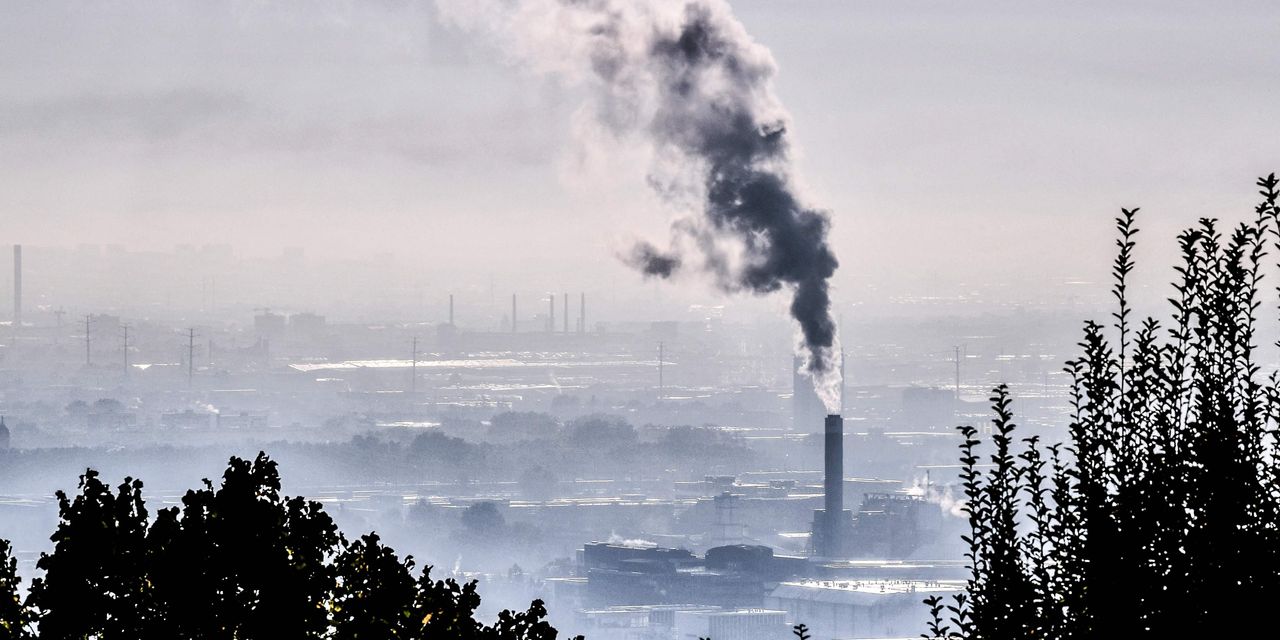
The world’s emissions-reduction plans would allow far more global warming than targeted in the Paris climate accord, and some of the biggest emitters, including the U.S., aren’t on track to hit their pollution targets, according to a report from the United Nations.
Tuesday’s report adds urgency to the summit set to begin in a few days in Glasgow, Scotland, the first major climate meeting since more than 190 nations signed the Paris agreement in 2015. Countries are searching for ways to reach the agreement’s goals, which call for them to ensure the rise in global temperatures by the end of the century is well under 2 degrees Celsius compared with the preindustrial era, and to strive to limit warming to 1.5 degrees.
The U.S. and Europe are pressing big developing nations, mainly China and India, to make more ambitious pledges to cut emissions. But China and India are rebuffing them. They want the West to do more, arguing that Americans and Europeans are responsible for far more carbon dioxide and other greenhouse gases per person than their developing-world counterparts.
Your Climate Cheat Sheet
Tap to further explore each entry
Glasgow goals
Politics
Carbon footprint
Science
What will a climate deal cost?
Finance
U.N. Climate change conference
Politics
See the full guide to the people, organizations and facts that will drive the U.N. Climate Conference talks.
The U.N. report analyzes all plans submitted under the Paris accord as of Sept. 30, and those—such as China’s—that haven’t been submitted. It finds the measures detailed in those plans through 2030 would still leave the world 2.7 degrees warmer by the end of the century. This confirmed a finding from September that didn’t include analysis of China’s plan or big polluters such as South Africa and Japan.
“We are still on track for climate catastrophe, even with the last announcements that were made,” said U.N. Secretary-General António Guterres.
The report found that pledges to hit net-zero emissions—with greenhouse gases offset by natural or other means of absorbing emissions—could bring down end-of-century warming to 2.2 degrees. However, the targets set by countries are for the midcentury or later; China has pledged to be carbon neutral by 2060, while the U.S. and the European Union have said they would get to net zero by 2050.
The pledges often have little substance behind them, according to the report.
Nations “need to make their net zero pledges more concrete,” said Inger Andersen, executive director of the U.N. Environment Program, the agency that prepared the report. “We are not doing ourselves a favor by kicking the net zero plan down the road until 2050. We need to take action before 2030.”
China, the world’s largest emitter of greenhouse gases, is planning to begin reducing its emissions before 2030. Officials from the U.S. and Europe say that timetable is too slow and are urging Beijing to plan to cut emissions sooner. China counters that the U.S. has repeatedly backed out of U.N. climate change deals—first the Kyoto Protocol under President George W. Bush and then the Paris agreement under President Donald Trump.
“The United States’ cumulative historical emissions per capita are eight times that of China,” Chinese foreign ministry spokesman Zhao Lijian said this month. “For many countries, there is still a big question mark about whether U.S. climate policy will change or even backpedal again.”
The U.N. report said that the U.S. is one of several Group of 20 economies that haven’t put policies in place to achieve the emissions targets of its previous plan submitted under the Paris accord, let alone its updated plan submitted from this year. The Biden administration has struggled to pass its emissions reductions plans through Congress because of opposition from Republicans and some centrist Democrats.
India, the second-most populous nation after China, also has yet to submit an updated emissions reduction plan under the Paris accord. The Indian government hasn’t made a net-zero pledge and has been one of the toughest critics of the West’s push to get developing nations to enact tougher emissions limits.
“You have countries whose per capita emissions are four or five or 12 times the world average,” Raj Kumar Singh, the Indian energy minister, said earlier this year. “The question is when are they going to come down?”
The report also flags methane emissions as a weak point in nations’ emission-reduction plans. Methane has around 25 times the heat-trapping potential of carbon dioxide, and there are relatively low-cost options available to reduce emissions, such as plugging leaks at oil and gas facilities.
Plans submitted under the Paris accord propose only around 23% of the methane reductions needed to limit warming to 1.5 degrees by the end of the century, the report says. Methane emissions would need to fall 44% by 2030 compared with 2015 to hit the 1.5-degree target. The U.S. and the EU have introduced a program called the Global Methane Pledge, under which governments commit to cut their emissions by 30% by 2030 compared with 2020.
Write to Matthew Dalton at [email protected]
Copyright ©2021 Dow Jones & Company, Inc. All Rights Reserved. 87990cbe856818d5eddac44c7b1cdeb8
Appeared in the October 27, 2021, print edition as ‘World Falls Short on Paris Accord.’








